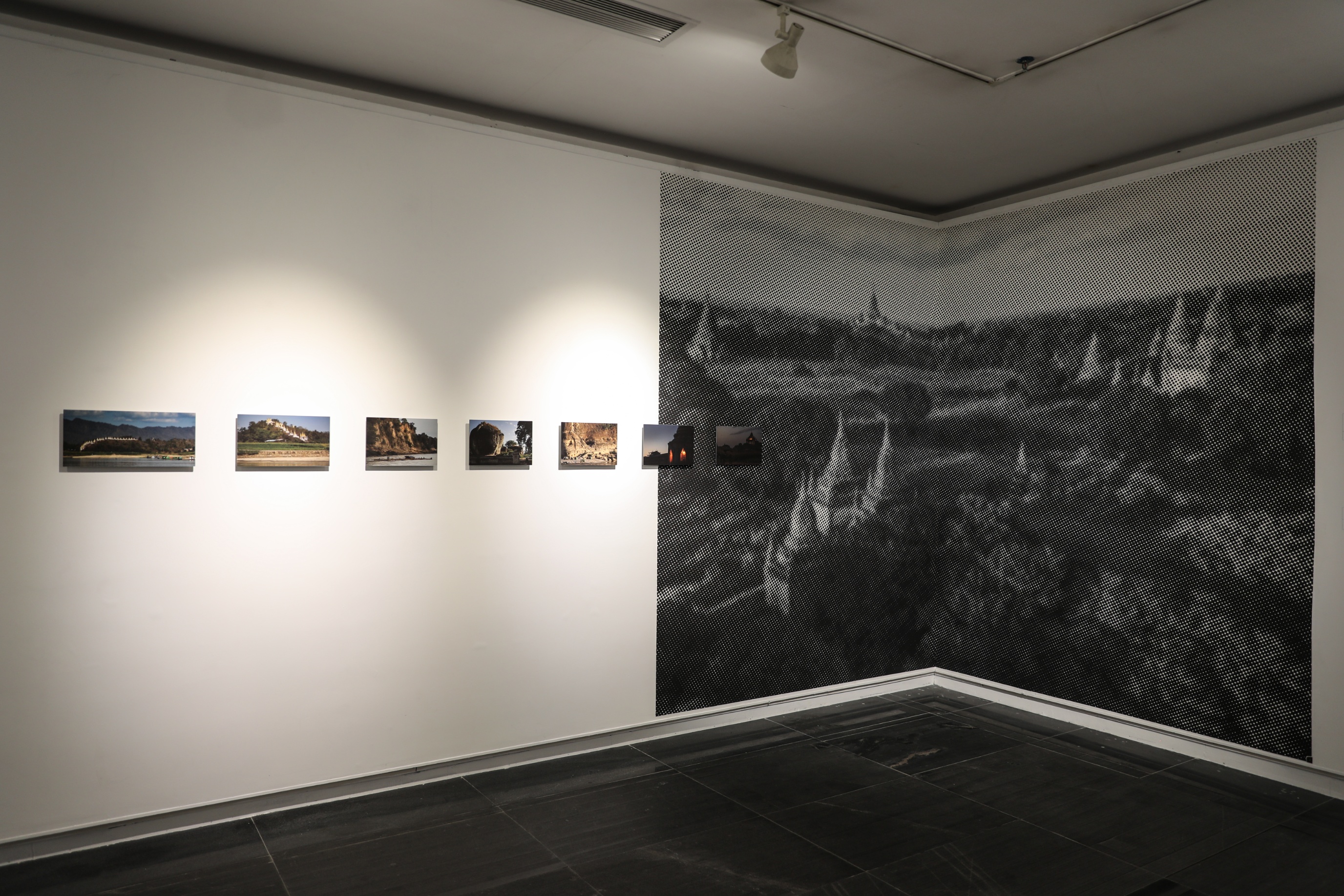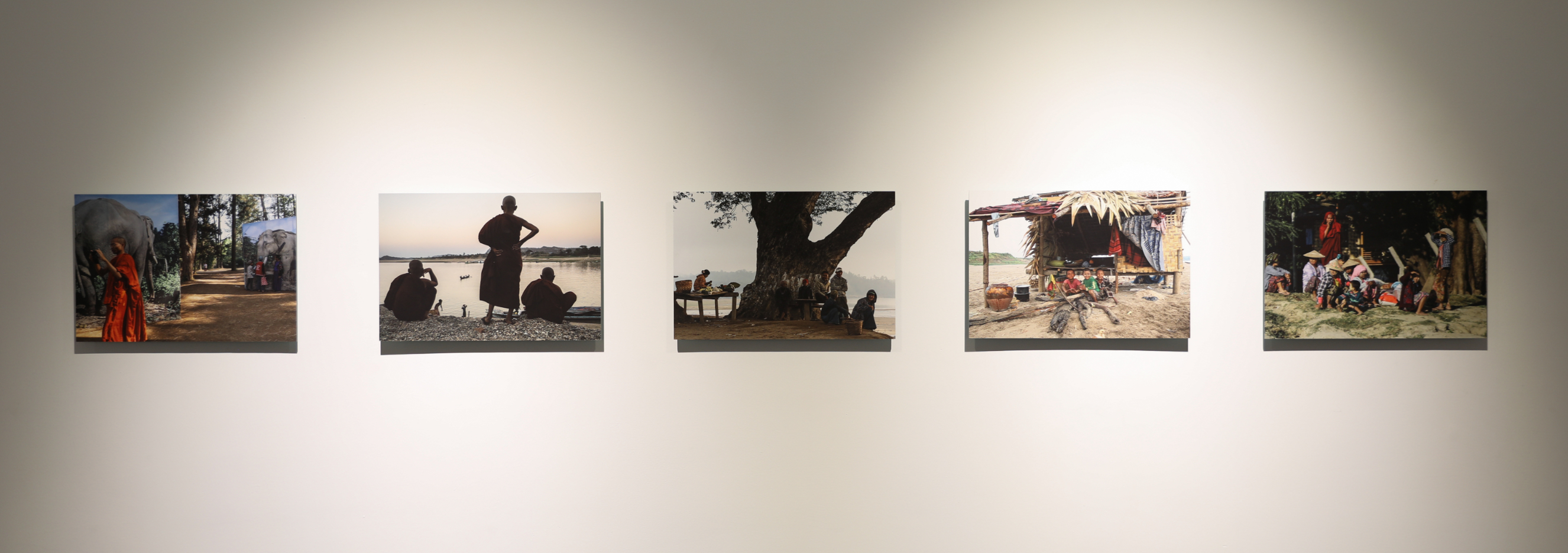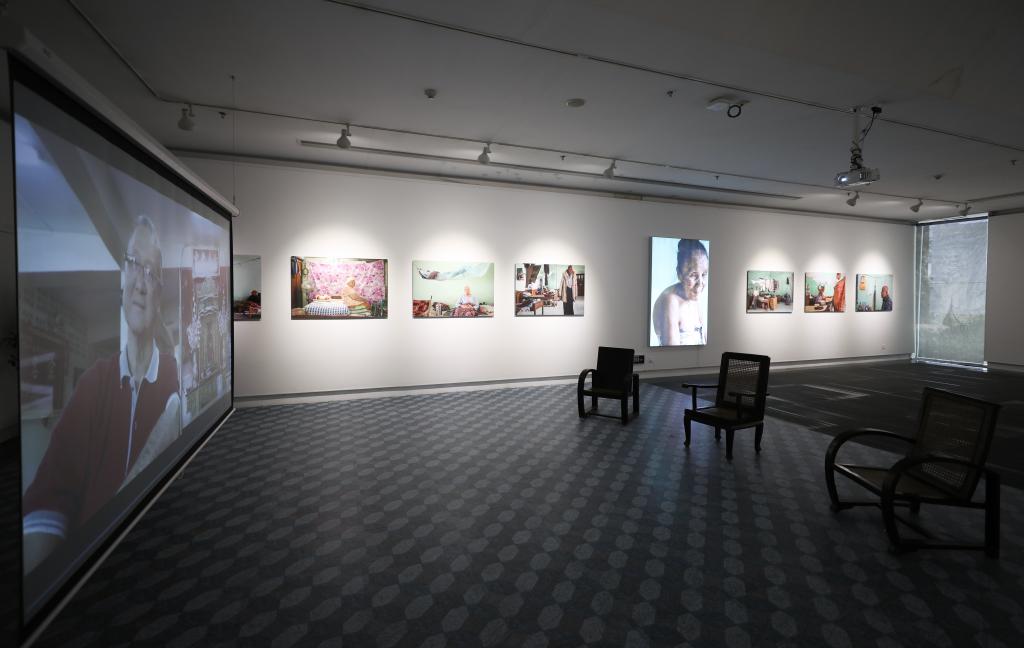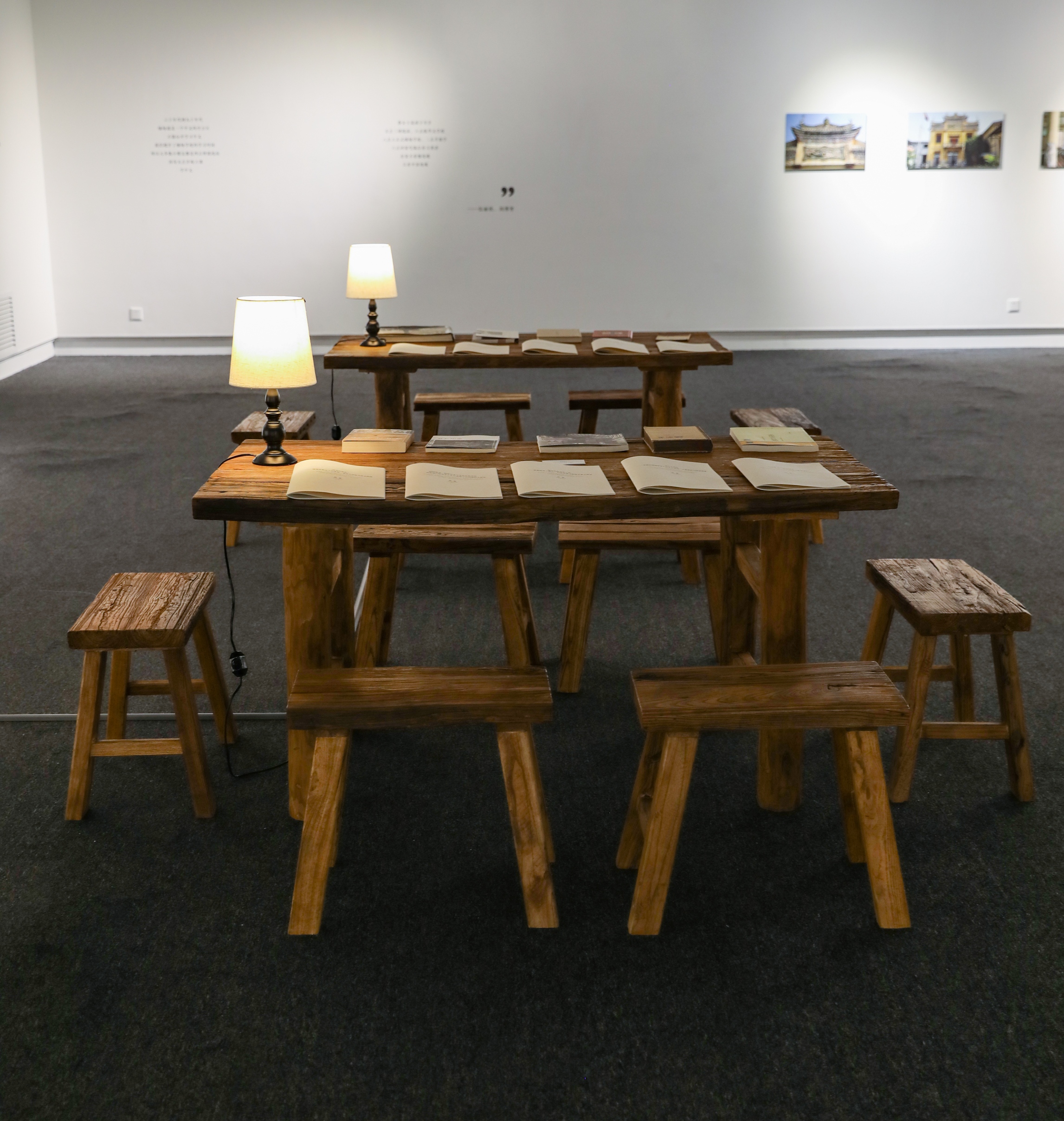
The first Trans—Southeast Asia Triennial research exhibition series #II: Overland and oversea:Liu Bozhi's Cultural Photography Exhibition of Chinese in Myanmar
Host: Guangzhou Academy of Fine Arts
Organizers: Art Museum of Guangzhou Academy of Fine Arts, Research Center for New Art Museum Studies of Guangzhou Academy of Fine Arts
Co-organizer: Jiangmen Wuyi Museum of Overseas Chinese
Collaboration with: Center of Overseas Chinese Studies in Sun Yat-sen University
Thanks: Shenzhen Yuezhong Museum of Historical Images
Special Thanks: Wu Liqiu, Wu Chaohe, Huang Xiaowen
Duration: October 20 to November 25, 2021
Venue: Hall 4, Art Museum of Guangzhou Academy of Fine Arts, University Town, Panyu District
Honorary Principal Advisor: Li Jinkun
Principal Advisors: Apinan Poshyananda, Kwok Kian Chow, Hou Hanru
Academic Advisors: Deng Qiyao, Yang Xiaoyan
Artistic Directors: Wang Huangsheng, Hu Bin
Curatorial Team: Chen Xiaoyang, Duan Ying, Ji Ran, Shen Sen
Graphic Design: Tian Bo
Exhibition Design: Yang Liu
Exhibition Production: Li Tiejun, He Quan, Huang Xingbiao, Luo Yubin
Public Programme: Wang Xiuyuan, Liu Ziyuan, Yu Shuang, Yang Liu
Volunteers: Jian Guorong, Wen Yuhui, He Xin
首届泛东南亚三年展序列研究展项目 #2
翻山越海:刘博智缅甸华人文化摄影展
主办单位:广州美术学院
承办单位:广州美术学院美术馆、广州美术学院新美术馆学研究中心
协办单位:江门市博物馆
合作机构:中山大学华侨华人研究中心
鸣谢:深圳市越众历史影像馆
特别鸣谢:伍丽秋、伍超和、黄效文
展览时间:2021年10月20日-11月25日
展览地点:广州美术学院大学城美术馆4楼展厅
名誉总顾问:李劲堃
总顾问:阿披南·珀西亚纳达、郭建超、侯瀚如
学术顾问:邓启耀、杨小彦
展览总监:王璜生、胡斌
策展团队:陈晓阳、段颖、冀然、沈森
平面设计:田博
展陈设计:杨柳
展览执行:李铁军、何泉、黄兴彪、骆钰槟
传播与教育:王秀媛、刘子瑗、余爽、杨柳
志愿者团队:简国荣、温煜晖、何昕

Preface
This exhibition originated from the organizing committee of Trans-Southeast Asia Triennial in early 2020, which entrusted Liu Bozhi to Myanmar to create a series of works with "Chinese in Myanmar" as the theme. During the seven-day field shooting, he went to Yangon, Mawlamyine and other southern cities in Myanmar. In addition, he also took a number of photographs and watching notes when he visited Mandalay, Lashio, Namtu, Kyaukme, Maymyo and other towns in northern Myanmar between 2013 and 2014. Historically, Myanmar and China were connected by mountains and rivers. Liu Bozhi's two trips to Upper Myanmar and Lower Myanmar echo the two migration routes of the Chinese in Myanmar "overland" and "oversea". It is in this context that this exhibition follows the perspective of Liu Bozhi, starting from geographical relationship, to explore the emotion and tension between life and thought, economy and work, family country and homeland in the society of Myanmar Chinese.
When we received Liu Bozhi’s photography works and shooting records from overseas via the Internet, we saw the rich and intricate details of the Chinese presence in all aspects of Myanmar society, the people and objects in the photos are vaguely visible in the humid, misty light of Indo-China Peninsula, this batch of pictures are not so much photographic works as survey records taken by anthropologist in the field with camera, a large number of medium shots that focus on the complex relationship between space, people and objects rather than deliberate photographic composition. Different from the "Immigration" exhibition at the end of 2019, these images even have few large portraits with visual priority and dramatic stories of "Havana Divas" as the highlights and clues of the exhibition. This way of blurring the subject and giving up the appeal of formal language allows the people to gain autonomy in the picture, countless pieces of information intertwined with history and daily life are presented in detail. Just like the Myanmar Chinese community, which receives little attention, it is difficult to find the magnificent stories and protagonists from these images. The images are more about the Myanmar Chinese in the ups and downs of their foreign life, calmly facing the daily life and life course of birth, aging, illness and death, the joys and sorrows of their life in a foreign land, and the little connections with their hometown are scattered behind the clutter of trivialobjects and complex situations.
After Liu Bozhi's trip to Myanmar in January 2020, the COVID-19 pandemic has continued to this day, and curatorial work has been carried out intermittently online. The participation of anthropologist Duan Ying provides rigorous academic guidance and discussion for the study of Myanmar related to the exhibition. Fortunately, one of the people Liu Bozhi photographed happened to be the reporter when he was working as a field researcher in Myanmar more than a decade ago, which provided us with the possibility of a deeper understanding of this overseas Chinese community. As a response to the fact that all participants are in history, we continued this dialogue process in the exhibition and opened the audiences’ view of Myanmar with the dialogue between Liu Bozhi and his guide Wu Liqiu. The two same diaspora overseas Taishan descendants, with an interwoven perspective of the inside and the outside, presenting Myanmar, a southeast Asian country that borders China but is not familiar with, as a kind of photographic ethnography in the exhibition hall, this dialogue between the visual text and narrative photographic images contributes a new connective attempt to observe the isolated Southeast Asian society at now.
Liu Bozhi’s fifty years of unique overseas Chinese documentary photography practice, also suggests some experience of action beyond the limits of media in the alienated post-globalized world, in front of each subject, it is too calmand rational to interpret the value of these actions with the existing theory of photography, because his photography is not only creating works, but also uses the power of photography to resist and interpret the lifelong questions of "why do I leave home" and "why do I return home" that have been entangled with himself and all overseas Chinese groups for more than 100 years. As the second project of the Trans-Southeast Asia Triennial Research Exhibition Series, Liu Bozhi's Myanmar Chinese cultural photography exhibition brings the group cases closely related to Southeast Asia and China. In such thematic exhibitions and research projects, we are gradually developing the cognition and understanding of different people and everything in this region, and building a platform for Trans-Southeast Asia interaction and dialogue.
Chen Xiaoyang
这个展览源于2020年初泛东南亚三年展组委会委托刘博智前往缅甸创作以“缅甸华人”为题材的系列作品,在为期七天的田野拍摄中,他去到了仰光、毛淡棉等缅甸南部城市。除此之外,他曾在2013年至2014年期间到访曼德勒、腊戌、南渡、皎脉、眉苗等缅甸北部城镇时,也拍摄了一批作品并留下观看笔记。历史上缅甸与中国山水相连,刘博智两次分别去往上缅甸与下缅甸地区考察的经历,恰好呼应了缅甸华人华侨“翻山”与“越海”两条迁徙脉络。正是在此背景下,这个展览也就跟随刘博智的视角,以地缘为起点,去探索缅甸华人社会中的生活与思想、经济与劳作、家国与原乡之间的情感与张力。
在刚收到刘博智从网络越洋传送过来的摄影作品和拍摄记录时,我们从照片中看到华人身处缅甸社会各个方面饱满而纷杂的细节,画面中的人与物,若隐若现在中南半岛潮湿蕴热的、犹如薄雾般的光线中,与其说这批图片是摄影作品,不如说更像人类学家在田野里用相机拍摄的调查记录,大量的中景镜头,画面的重点是空间、人、物件的复杂关系而不是刻意的摄影构图。与2019年底的“移民”展的不同之处在于,这批图像中甚至很少视觉优先的大幅肖像和戏剧化的“古巴花旦”故事作为展览中的高光和线索,这种模糊主体与放弃形式语言述求的方式,让被拍摄者在画面中获得自治,无数与历史及日常交汇缠绕的信息被事无巨细地展现出来。就像并不受特别关注的缅甸华人群体一样,从这批记录性摄影图像中很难找到波澜壮阔的故事和主角,图像中呈现的更多是缅甸华人在起伏动荡的异国生涯中,从容面对生老病死的日常生活和生命历程,他们在异乡生活的喜怒哀乐,以及与故乡的点滴联系,都弥散在杂乱的琐碎物件和复杂情境背后。
在2020年1月刘博智的缅甸之行后,新冠疫情一直延续至今,策展工作只能在线上断断续续进行。人类学家段颖的加入,为展览相关的缅甸研究提供了严谨的学术指导和讨论,幸运的是,刘博智拍摄的人物中刚好有他十多年前在缅甸做田野时的报道人,这为我们带来更深入理解这个海外华人群体的可能。于是我们顺势将这个对话过程延续到展览中,作为对所有参与者身处历史之中的回应,并以刘博智与他的向导伍丽秋的对话做引导,打开观众对缅甸的观看。两位同样流散海外的台山人后裔,以局内与局外交织的视角,将与中国毗邻却并不熟悉的东南亚国家——缅甸,以类似影像民族志的形式呈现在展厅中,这种视觉化的文本与叙事性摄影图像的对话,为当下观察仍处隔离状态的东南亚社会贡献了新的连接尝试。
刘博智五十年独特的海外华人纪实摄影实践,也为我们在疏离的后全球化世界里提示出某种超越媒介限制的行动经验,在每个被他拍摄的对象面前,这些行动的价值用已有的摄影理论去解读都显得过于冷静与理性,因为他的拍摄并不只是在创作作品,更是以摄影的力量去抵抗和解读自己与所有海外华人群体百多年来“为何要离乡”“为何要还乡”缠绕终生的追问。作为泛东南亚三年展序列展览的第二个项目,刘博智的缅甸华人文化摄影作品展带来了东南亚与中国密切关联的群体个案,我们正在这样的一个个专题展览与研究项目中,逐步展开对这个区域中不同的人与万物的认知和理解,并构建起泛东南亚交互对话的平台。
陈晓阳
Exhibition View
 |
Introductions of Liu Bozhi and the third generation Burmese Chinese, Wu Liqiu; The audiences are taken into the Burmese Chinese community through their viewpoints. / 刘博智、伍丽秋简介;展览通过二人的视角将观众引入缅甸华人社会。
 |
| Myanmar Glimpse, Human and geographical landscapes of Myanmar taken by Liu Bozhi along the Irrawaddy and Chindwin River Basins. / 缅甸掠影,刘博智摄于伊洛瓦底江、钦敦江流域的人文地理风貌 |
 |
| Myanmar Glimpse, Human and geographical landscapes of Myanmar taken by Liu Bozhi along the Irrawaddy and Chindwin River Basins. / 缅甸掠影,刘博智摄于伊洛瓦底江、钦敦江流域的人文地理风貌 |
 |
| Myanmar Glimpse, Human and geographical landscapes of Myanmar taken by Liu Bozhi along the Irrawaddy and Chindwin River Basins. / 缅甸掠影,刘博智摄于伊洛瓦底江、钦敦江流域的人文地理风貌 |
 |
| Myanmar Glimpse, Human and geographical landscapes of Myanmar taken by Liu Bozhi along the Irrawaddy and Chindwin River Basins. / 缅甸掠影,刘博智摄于伊洛瓦底江、钦敦江流域的人文地理风貌 |
 |
History of the Chinese Diaspora in Myanmar / 缅甸华人华侨史
 |
| Mandalay Jade Market in Myanmar / 缅甸曼德勒玉石市场 |
 |
| Daily life of the Chinese in Myanmar / 缅甸华人华侨日常生活 |
 |
Video shows Mr. Mei, whose forefathers were from Taishan recalls his childhood fun of listening to Cantonese opera. / 展出影像,祖辈来自台山的梅先生回忆儿时听粤剧趣事
 |
Elderly home donated by Burmese Chinese in Mandalay, Myanmar / 缅甸曼德勒华人捐建老人院
 |
| Exhibition view 1 / 展览现场1 |
 |
| Burmese Chinese Community Activities / 缅甸华人社团活动 |
 |
| Jian De Tang, a local Chinese association in Mandalay, Myanmar / 曼德勒建德堂 |
 |
| A local Chinese association in Lashio, Myanmar / 缅甸腊戌华人社团 |
 |
| Reading Area displays research related to the Chinese diaspora in Myanmar / 阅读区陈列缅甸华人华侨相关研究 |
 |
| Exhibition view 2 / 展览现场2 |
|
|
|
| |
|
|



